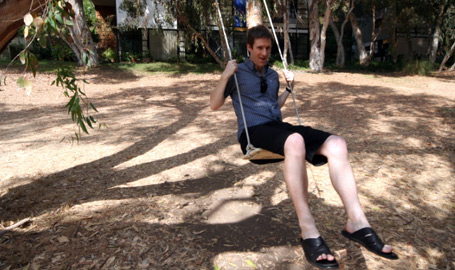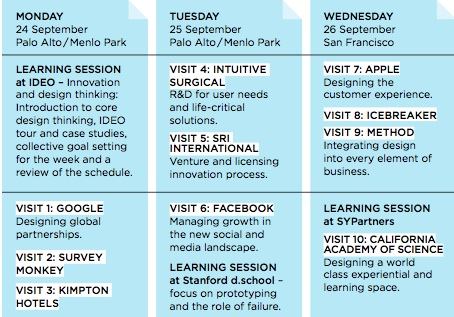
“It’s not about going from left to right and some magic happens on the other side, it’s about understanding the intention”.
…Said Director of Design Innovation at Intuit, a stop on the Bettter by Design Study Tour I was part of in 2012.
During our visit, Intuit shared how design thinking changed the culture, and profit of the company (eventually).
Their story: How they tried and failed to install ‘design as a process’ into their teams, arriving at a more engaging and successful model of ‘principles’.
A couple of key points I took away:
Design thinking – to the rescue?
With a history of incremental usability improvements but no real innovation, Intuit took a big swig from the design thinking cup. Their aim was to integrate design thinking into the business, to be more user-focused – exceeding customer expectations, rather than just meeting them.
Things didn’t go as planned…
“We made a mistake in that we started with design thinking as a process, when we brought a process back to Intuit, they puked all over it. Because in a culture where; product development has an agile process, marketing have a go-to-market process and legal have a compliance process, they couldn’t reconcile the design thinking process on top of theirs, so they did nothing”.
So, the conventional design thinking process wasn’t flexible enough for the realities of their culture and practice, and it simply wasn’t engaging teams.
Principles, not process.
To replace the rigid ‘process’ approach, Intuit arrived at three principles to underline all development work- teams could use whatever methods they liked, so long as they adhered to those principles.
So, how did that go?
“A seminal moment in our journey was when we took the process of design thinking and made it into principles. It’s not about going from left to right and some magic happens on the other side, it’s about understanding the intention behind these principles, then you can make it your own”.
“We have watched teams come up with their own methods and tools at any time in the process and it totally works. Thats when we saw uptake in the culture, when we started to see behaviours change, when we gave them permission to make it their own”.
Here are their principles:
- Deep Customer Empathy (Know your customers better than they know themselves)
- Go Broad to go Narrow (Quantity of solutions, then focus)
- Rapid Experimentation with Customers (Prototype, test, iterate)
Sounds like a win to me, especially if this has taken hold in an organisation of thousands.
So, how do Intuit involve customers in their design process?
To deliver on their first principle, (apart from their dedicated UX team) Intuit has committed to getting their teams out of the office and into the context of their customers using their products. Unsurprisingly, this has proven to build empathy for the customer, and as a positive bi-product, engagement with the ongoing design process.
Two big wins.
“We went from listening and fixing problems, to watching to find what they really need but can’t tell us.
This changed the way the organisation makes decisions by watching people’s behaviours versus listening to what they say”.
If you’re wanting to institutionalise design thinking, there’s a video on the Adaptive Path website which tells this story from another Intuit insider’s viewpoint http://youtu.be/HrxD_BaZlcU
 Google have a stab at answering this question in their article ‘What fuels great design and why most startups don’t do it?”
Google have a stab at answering this question in their article ‘What fuels great design and why most startups don’t do it?”




